Abstract
Par Pond is a thermally enriched monomictic southeastern lake which receives heated effluent from a production nuclear reactor. Fish populations in the lake have lesions of epizooty from which Aeromonas spp. are readily isolated. Distribution and population densities of Aeromonas in the water column were measured along an oxygen and temperature gradient as well as seasonally. Greater population densities of Aeromonas occurred below the oxygen chemocline when the lake was stratified. Survival of Aeromonas hydrophila under in situ conditions in both epilimnetic and hypolimnetic waters was determined through the use of polycarbonate membrane diffusion chambers during two separate reactor operating conditions. Survival levels of pure cultures of A. hydrophila corresponded to the distribution patterns of the naturally occurring Aeromonas-like populations. The greater survival of A. hydrophila during full reactor operation suggests that the fish populations may be exposed to Aeromonas for a longer period of time than when the reactor is not operating.
Full text
PDF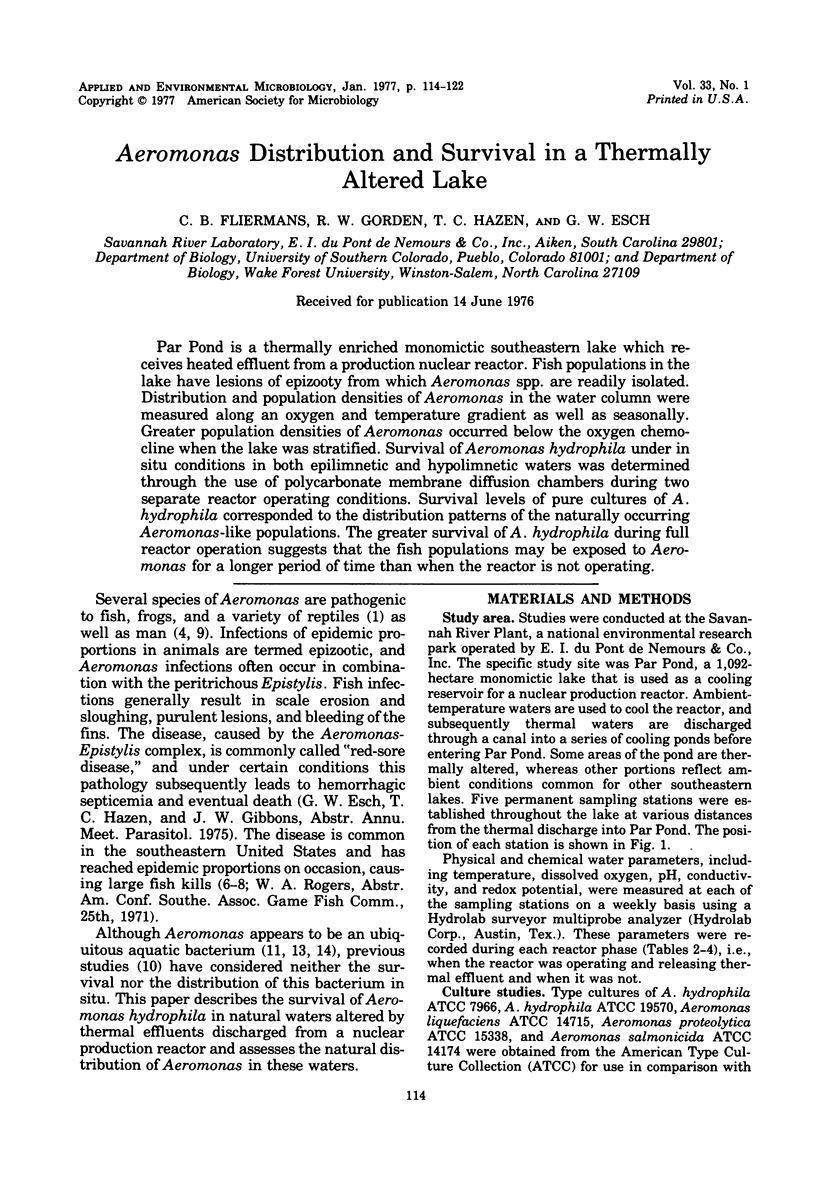

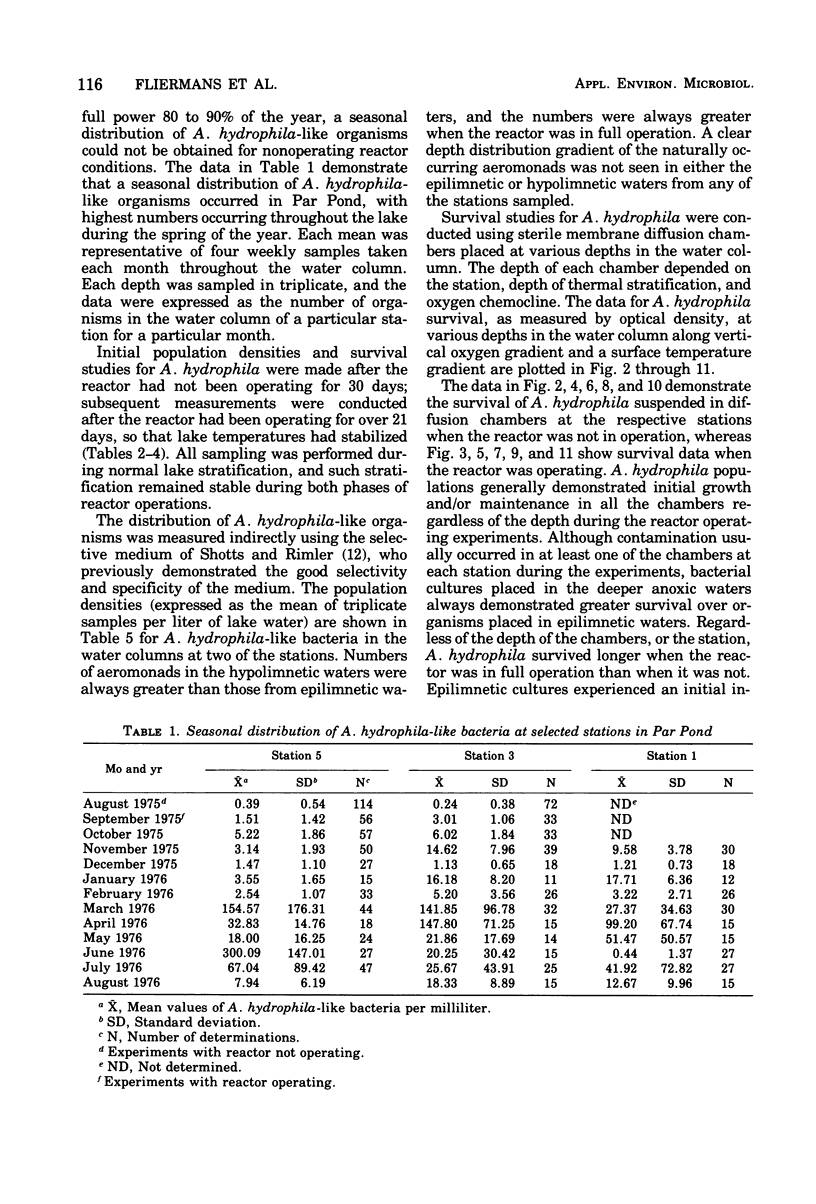


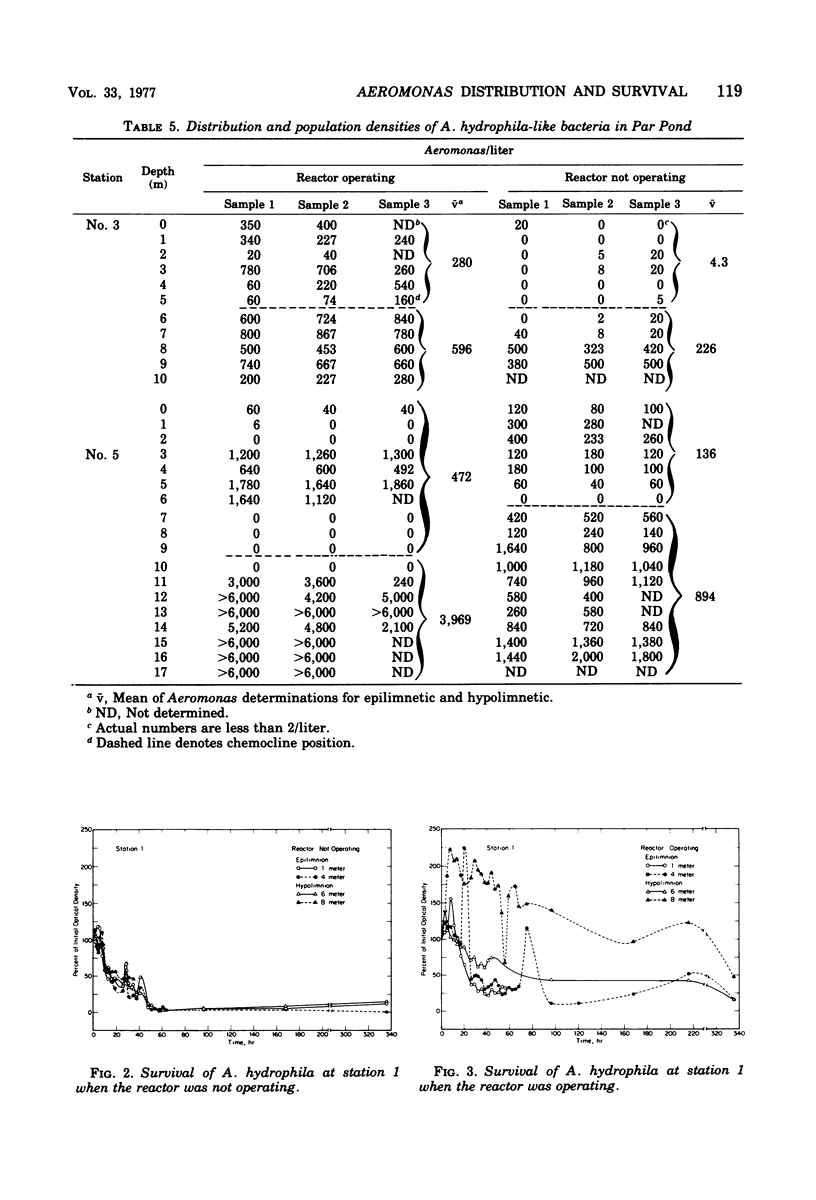

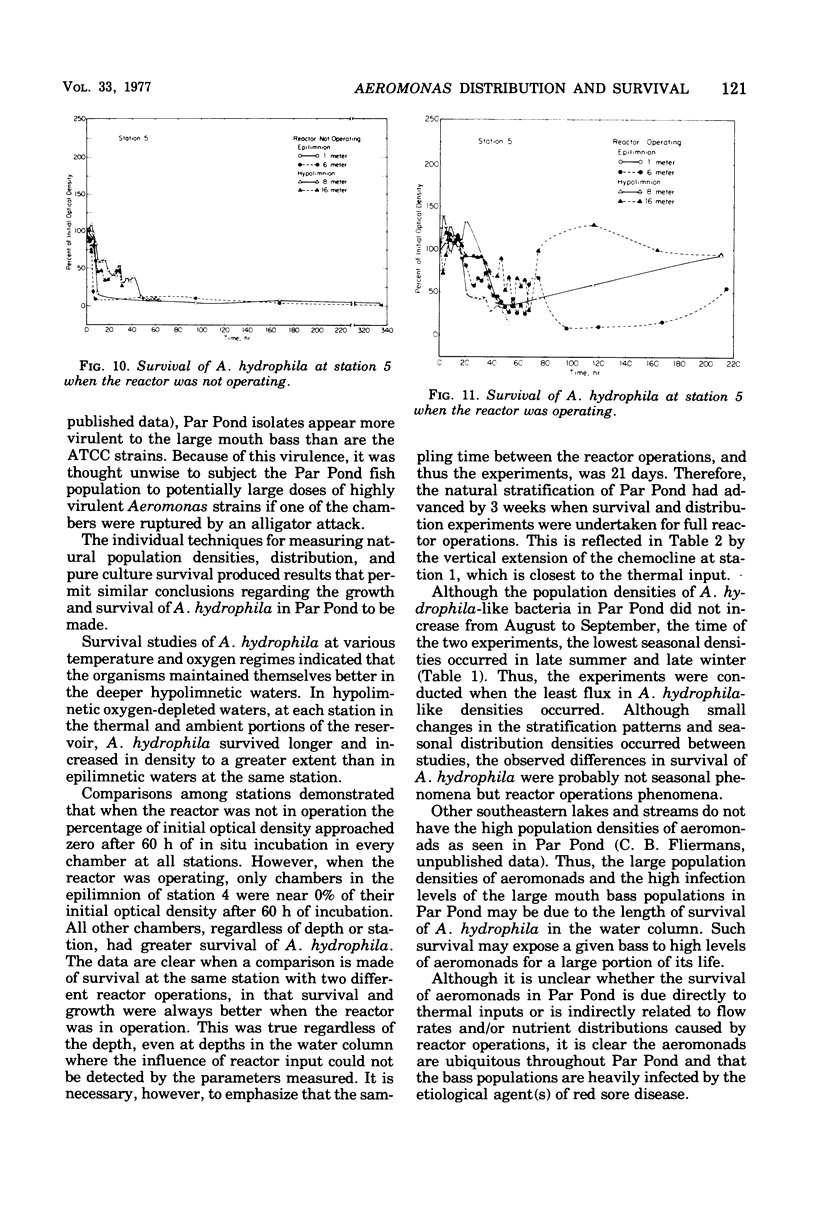
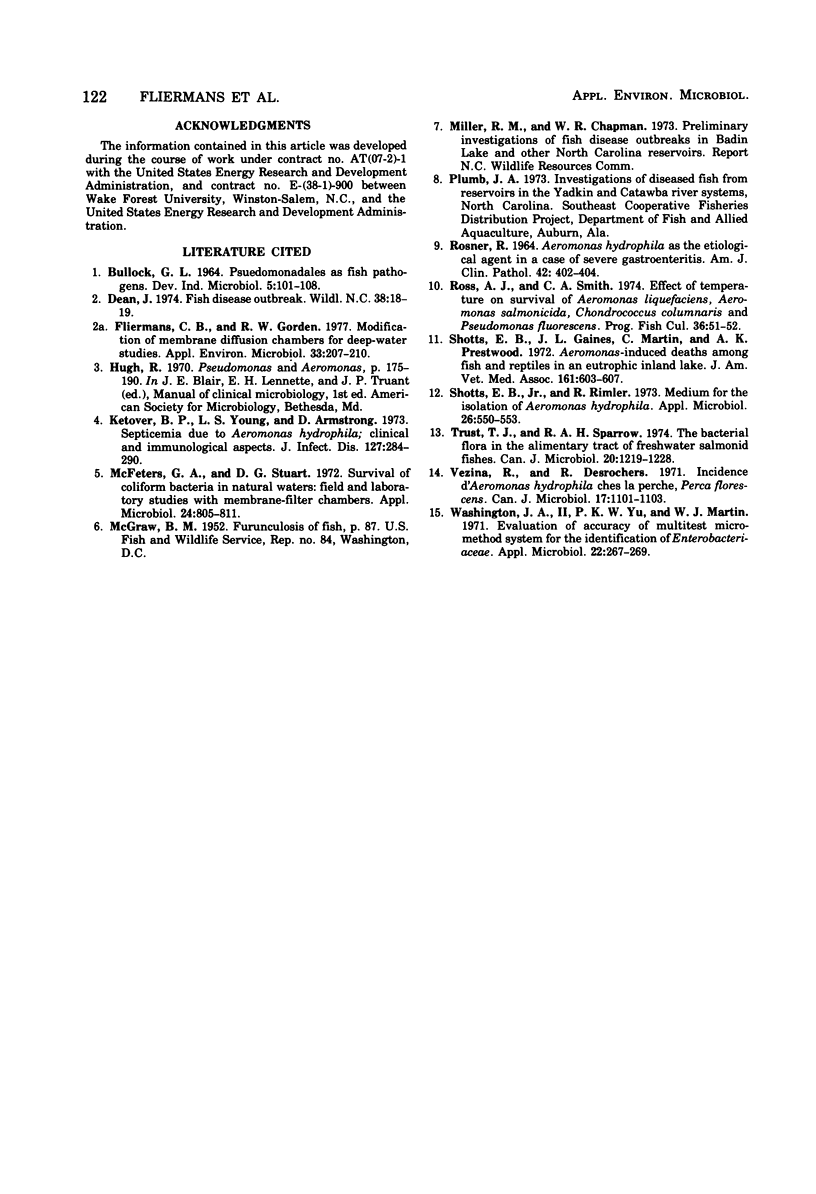
Images in this article
Selected References
These references are in PubMed. This may not be the complete list of references from this article.
- Fliermans C. B., Gorden R. W. Modification of membrane diffusion chambers for deep-water studies. Appl Environ Microbiol. 1977 Jan;33(1):207–210. doi: 10.1128/aem.33.1.207-210.1977. [DOI] [PMC free article] [PubMed] [Google Scholar]
- Ketover B. P., Young L. S., Armstrong D. Septicemia due to Aeromonas hydrophila: clinical and immunologic aspects. J Infect Dis. 1973 Mar;127(3):284–290. doi: 10.1093/infdis/127.3.284. [DOI] [PubMed] [Google Scholar]
- McFeters G. A., Stuart D. G. Survival of coliform bacteria in natural waters: field and laboratory studies with membrane-filter chambers. Appl Microbiol. 1972 Nov;24(5):805–811. doi: 10.1128/am.24.5.805-811.1972. [DOI] [PMC free article] [PubMed] [Google Scholar]
- ROSNER R. AEROMONAS HYDROPHILA AS THE ETIOLOGIC AGENT IN A CASE OF SEVERE GASTROENTERITIS. Am J Clin Pathol. 1964 Oct;42:402–404. doi: 10.1093/ajcp/42.4.402. [DOI] [PubMed] [Google Scholar]
- Shotts E. B., Jr, Gaines J. L., Jr, Martin L., Prestwood A. K. Aeromonas-induced deaths among fish and reptiles in an eutrophic inland lake. J Am Vet Med Assoc. 1972 Sep 15;161(6):603–607. [PubMed] [Google Scholar]
- Shotts E. B., Jr, Rimler R. Medium for the isolation of Aeromonas hydrophila. Appl Microbiol. 1973 Oct;26(4):550–553. doi: 10.1128/am.26.4.550-553.1973. [DOI] [PMC free article] [PubMed] [Google Scholar]
- Trust T. J., Sparrow R. A. The bacterial flora in the alimentary tract of freshwater salmonid fishes. Can J Microbiol. 1974 Sep;20(9):1219–1228. doi: 10.1139/m74-188. [DOI] [PubMed] [Google Scholar]
- Vézina R., Desrochers R. Incidence d'Aeromonas hydrophila chez la perche, Perca flavescens Mitchill. Can J Microbiol. 1971 Aug;17(8):1101–1103. doi: 10.1139/m71-173. [DOI] [PubMed] [Google Scholar]
- Washington J. A., 2nd, Yu P. K., Martin W. J. Evaluation of accuracy of multitest micromethod system for identification of Enterobacteriaceae. Appl Microbiol. 1971 Sep;22(3):267–269. doi: 10.1128/am.22.3.267-269.1971. [DOI] [PMC free article] [PubMed] [Google Scholar]



